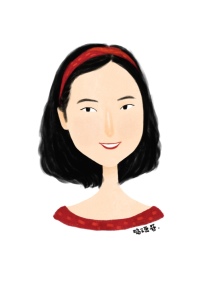Klein states in her book that there is a “burgeoning awareness that a brand was not just a ascot or a catchphrase or a picture printed on the label of a company’s product; the company as a whole could have a brand identity or a ‘corporate consciousness’ ” (Klein, 1999, p.12) by the end of the 1940s. Thus, the end of the 1940s is a period that marks the beginning of cultural branding. However, for me, it seems like the history of cultural branding is older than the writings of Klein imply. For example, Marchand’s analysis of the American advertising in 1920s and 1930s suggests that many brands have already begun to add cultural meaning to their products. For instance, a cereal product in 1920s and 1930s could assert in their advertisements that the food with artificial flavors were lack of the vitamin that the natural food could provide us and gave the public advice on how to eat naturally and healthily. In this way, the cereal brand propagandized its products with a reference of healthy eating culture. Also, Moor points out that in the early years of the 20th century, the consumer goods in Britain presents an imperial patriotism which indicates a culture of nationalism. (Moor, 2007). Nevertheless, it may not be appropriate if we only conclude that cultural branding can be traced back further before 1940s. Anyway, we are not sure which time is the exact date of the emergence of cultural branding because cultural branding is “a set of axioms and principles” (Holt, 2004, p.11) that need long time revision and improvement.
According to my point of view, there were several stages of the consumer culture and connected styles of advertising in 20th century. The first stage was the period before 1920s, in which the factories and the mass public mostly produced and bought the goods that satisfied the basic living requirement. The second period was from late 1920s to 1960s. At this time, with the development of technologies, there were more categories of goods and there are more surplus. In order to make profit from the surplus, the companies began to adapt the products with the aesthetic value of that time and thus the consumers began to buy the things which were not the basic living articles but were objects that meet their desire of pleasure. A car could then have different colors, and the general appearance of it can be streamlined. The third stage was the period from the end of 1960s to 1980s, in which corporate identity were formed. A product is the result of the cooperation of experts in marketing, sociology, anthropology, etc and the satisfaction of the consumers were the motive of the product’s design. And the last stage is in the 1990s, in which the service sector played a major role and consumers bought products for its consumer services.
In the first stage that I described above, the major way of advertising was adding image or text which aimed at indicating the origins or the contents of the products on the package or the container of them. For example, an image of grapes may be on the bottle of a wine to show its ingredients.
In the second stage, the way of advertising improved. With the emergence of avant-garde movement like the Dadaism and Surrealism, the advertisements of products started to care about the style and design of the advertisements. During this phase, the advertisements of the products set out to be more colorful and paid more attention to the ensemble. For example, as Marchand noted, an advertisements of a towel were more colorful. Not only did the towel become more colorful and stylish, the advertisements also suggested the decoration of the bathtub, the color of the wall and the decoration of the whole bathroom (Marchand, 1985).
In addition to the involvement of the artists in the advertisements, the photography also took part in the making of advertisement. In an advertisement of the make-up, two photographs could provide the function of the make-up.
There is also another characteristic of the advertisements at this stage, that is to say, the use of parable in the advertisements. For instance, the parable of First Impression could be used for advertising in make-ups, perfumes, body-cleaning products, clothes, etc.
It should not be forgotten that the advertisement in this period did not only illustrate the products, but also pushed the producers to make products as the advertisements depicted.
The use of text was reduced in the later time of this period, and visual perception became the major attraction of advertisements. More meanings were added in the images. An advertisement which tried to portray a happy family often presented us an image in which a father stayed in the center with the company of the mother by his side and looked at their children with love. In the ad, the harmony of a family was presented to us. At the same time, there is a notion of the subordinance. Man was the highest, woman was the nest, and the children were in the margin.
In the next two stages, the advertisements were not only about the products, but also about the employees of the corporation and their services and the Starbucks which give special training for their employees is a good example to illustrate the feature of advertisements in this phase.
References
Holt, D.B. (2004). How Brands Becomes Icons. The Principles of Cultural Branding. Cambridge Mass: Harvard Business School Press.
Klein, N. (1999). No Logo: no space, no choice, no jobs: taking aim at the brand bullies. New York: Picador.
Marchand, R. (1985). Advertising the American Dream. Making Way for Modernity, 1920-1940. Berkeley etc: University of California Press.
Moor, L. (2007). The Rise of Brands. Oxford/New York: Berg.
Additional Sources
The American Advertisements in the 20th Century




